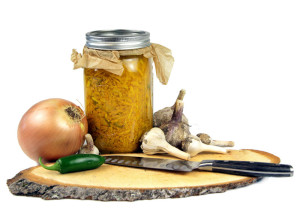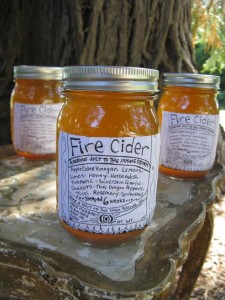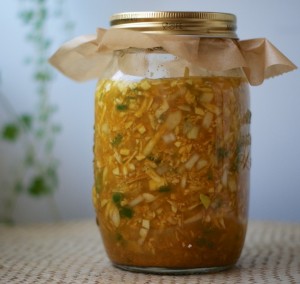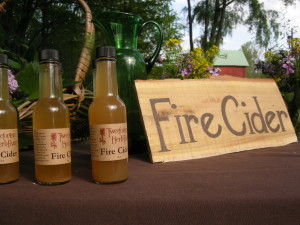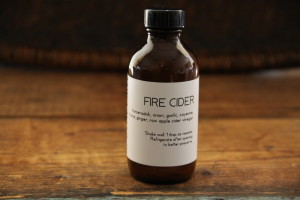‘In Chinese medicine there are hundreds of traditional formulas that belong to the commons. If you buy Liu wei di huang wan (Rhemannia 6) or Bu zhong yi qi tang (Tonify the Middle and Augment the Qi Decoction) you will find essentially the same formula made by a wide variety of manufacturers under the same name. They may have minor variations but are essentially the same in function and content.Many of the recipes and their names derive from famous doctors like Zhang Zhongjing who wrote the Shan Han Lun or Sun Si Miao. The names of the formulas neither are nor can be trademarked by a single company. The Bensky formulas book contains over 500 traditional formulas.
There exist in Chinese medicine private, patent-protected formulas like the famous Yunnan Bai Yao stop bleeding formula. The difference is that Yunnan Bai Yao is relatively modern, developed by Dr. Qu Huan Zhang in 1902, was always private (but now controlled by the Chinese government) whereas other traditional formulas are and have been public for centuries. So no one can trademark “Liu wei di huang wan”, although one can create other similar formulas for yin deficiency. There certainly are other formulas to stop bleeding and many of them use san qi (notoginseng root) which is believed to be the basis of Yunnan Bai Yao’s secret formula but they cannot use the non-traditional trademarked name.
There are also many modern “hospital formulas” whose exact content remains sketchy in Medscape abstracts and these are being protected for profit. In addition many companies make patent-protected variants of traditional formulas under other names, but the vast majority of herbal formulas are traditional. In Japan these formulas with regulated recipes are part of the the National Health Insurance drug registry.
We have traditional recipes in Western herbal medicine too although far fewer of them. Mithridaticum was a shotgun anti-poison remedy from the first century BCE,. The Romans enlarged and adapted it as “Theriacum”, described in pharmacopoeias for centuries up through the European Renaissance. The Middle Ages brought Thieves’ vinegar, allegedly composed by the midwife mother of one of a gang of 4 thieves who managed to steal from houses where the Black Death had stricken without themselves contracting the plague. During many centuries great herbalists from Hildegard of Bingam to Gerard to Maimonides to Culpepper used formulas, but few were standardized. Most Western herbals classified single herbs both by properties and energetics even if they might be used in combined formula. And assaults against using herbal medicine, from early Christian faith-healing through the witch trials up to the early 20th century Carnegie Commission broke the continuity of traditional herbal formulas in a way that the documented Chinese herbal tradition did not have to contend with.
There were a number of well-known formulas in the 19th and 20th century Samuel Thompson came up with his famous Composition Formula which treated diarrhea and dysentery along with a variety of formulas featuring cayenne and lobelia. Roberts Formula is traditional for ulcers. Neutralizing cordial was developed by the Eclectics for fermenting and irritating conditions of the stomach and intestine. Mother’s cordial was an Eclectic formula promoted by Feltzer and Lloyd to prepare the uterus for labor at the end of pregnancy. Antispasmodic Tincture made from lobelia seed, crushed skullcap, skunk cabbage root, gum myrrh, black cohosh and cayenne was developed by Thompson and refined by both Dr. Christopher and Jethro Kloss for spasms of all kinds and lung conditions. Kloss, D. Schulz, Tommie Bass, Hannah Kroeger, Dr. Shook and Dr. Christopher popularized a variety of formulas for the public good including Blood Stream Formula for clearing “bad blood”, Bone Flesh and Cartilage (BF&C), Anti- Gas Formula and many others. These were freely adapted and many companies produce versions of the formulas. Other herbalists who drew on common formulas include Harry Hoxsey whose named formula drew heavily on the Park Davis Trifolium (red clover) Formula. Black salves and drawing salves for cancer also percolated through the herbal commons, as did versions of Essiac.
There were also trademarked names and patented products. Swedish Bitters is a trademarked version of digestive bitters There are licensed and trademarked Edgar Cayce formulas. Lydia Pinkham tonic is trademarked. Airborne is a modern trademarked and patented product derived from the traditional Yin Qiao San with additional nutrients and echinacea. The difference between a trademark and a patent is that a trademark restricts the name of the formula but not the content while the patent restricts both.
Rosemary Gladstar was one of the early pioneers of the current wave of American herbalists and started teaching in the 1970s. In the tradition of the earlier herbalists she did not trademark her formulas and a wide variety of products have been inspired from her teachings, often using the same names. Fire Cider is a term invented by Rosemary Gladstar over 35 years ago, and has been shared by her freely since then to tens of thousands of people. She has it in her published and copyrighted books and teaching handouts from the 90‘s and pamphlets from the 1970’s. The formula is much older than her – indeed Mrs. Grieve has a similar formula under another name and countless middle European grandmothers have made horseradish and onion-based therapeutic vinegars. Various people have used both the name and basic formula for decades. Monica Rude of Desert Woman Botanicals has sold Fire Cider since the 1990s, for instance and taught the recipe under that name.
We have an herbal incident occasioned by a firm named Shire City who decided to trademark the term “Fire Cider” based on inaccurate information provided to the US Patent and Trademark Office. One of the principals of the firm apparently studied herbalism at the school where Monica Rude was teaching about Fire Cider and experimented with making fire cider at that time. The Shire City Trademark application summarized here claimed that the the first use of the term was 12/4/2010 and that date was its first use in commerce.
A simple time delimited Google search would have uncovered Fire Cider for sale listings before 2010 like this one .
- Susun Weed had a Fire Cider forum topic on Fire Cider in 2003.
- Amanda McQuade made a video on it in 2009.
- Food.com listed the recipe in 2005.
- The current Desert Woman Botanicals sales page is dated March 15, 2005 and Rootwork Herbals sold it in 2008.
- A 2005 article on the Desert Woman Botanicals web site discusses selling Fire Cider in Massachusetts, Utah, Texas and Arizona as well as New Mexico.
- A 2002 Etsy page listed several Fire Cider variations by different sellers. (All dates according to Google.)
- GreenMedInfo discussed it in a Joe Cross interview on February 1, 2001.
- Rosemary Gladstar of course has it in her copyrighted books and teaching materials at least since the early 1980s and perhaps earlier. And on Rosemary’s Fire Cider YouTube video.
- Rosemary is credited with inventing the term and bringing the basic recipe to the herbal community in her books, The Home Medicine Chest (Storey Publications, 1999) and Rosemary Gladstar’s Family Herbal (Storey Publications, 2001) and has expressed her desire that the term remain in the herbal commons.
We do not know whether the erroneous information in the trademark application is accidental, due to the ineptitude of their attorney (who apparently didn’t do a Google search) or was deliberate, done with the specter of future work defending the trademark, or was done with the cooperation of Shire City. What we do know is that someone from the company or their counsel contacted Etsy and Amazon and that a number of small herbalists were shut down . They insisted on their right to trademark the name, describing its use as unknown before they publicized it. Given the patently untrue assertions, the high regard Rosemary Gladstar is held in and the history of fire ciders, the herbal community erupted with petitions that picked up thousands of signatures in a few hours, calls for boycotts and the Shire City Fire Cider Facebook page was flooded with critical comments.
After requesting a few weeks to consider what to do they doubled down and essentially claimed that the only thing to be done is to sue them, “The only thing that will make the name ‘fire cider’ a generic term is a ruling from the USTPO. Challenging a trademark through the USTPO is a commonplace occurrence with clear rules and requirements, and we welcome anyone who would like to avail themselves of this path. This is legal, fair, and something to be expected as a part of doing business.” Now it isn’t their only option and they may be trading on the idea that the herbal community is unable to mount a legal challenge. The trademark can be withdrawn or abandoned , as was “Soap Loaf” or “Lotion Bar.” It could be transferred to Rosemary Gladstar who would allow free use or it could be amended to exclude “Fire Cider” as “Cider” was also excluded but to protect a name like “Dana’s Fire Cider” or “Shire Fire Cider.
To summarize, Fire Cider has been part of public domain for decades, not a brand name and not even one that was trademarked by its inventor. It is traditional like Bu zhong yi qi tang rather than proprietary like Yunnan Baiyao. Analogously one could legitimately trademark “Shire Fire Cider” which is not a common name. But it was improper to trademark “Fire Cider” because that term was generic in the trade, just as the traditional Chinese herbal formulas like Lu wei di huang wan are.
There is currently a boycott of Shire City’s Fire Cider and it looks like there may have to be a lawsuit. People are asking local health food stores and other venues not to carry the product until the trademark is resolved. So speak to your local health food, food store or co-op and :
- Sign the Petition: http://chn.ge/1nKmS2o
- Volunteer Your Time: http://bit.ly/1fxN5eF
- Read the Blog: http://bit.ly/1gPpVWt
- Make your own fire cider: http://www.acupuncturebrooklyn.com/alternative-health/making-fire-cider
Related articles:









